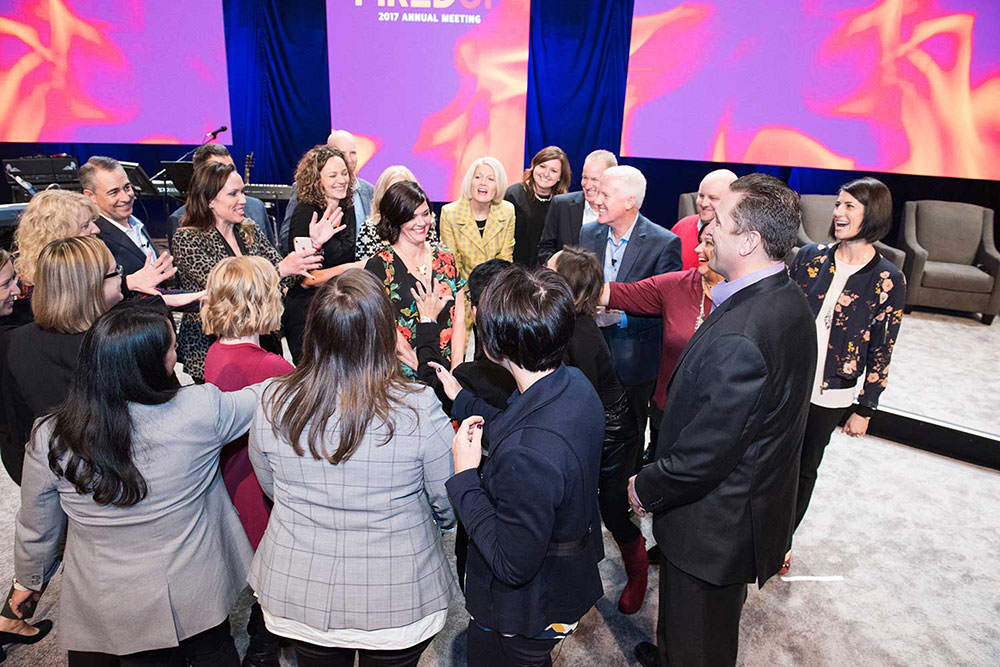May 22, 2019
By Christina Zurek, SHRM-CP, Insights and Strategy Leader, ITA Group, Inc.
With companies reportedly spending $18 billion on tools to bolster employee engagement globally, it’s clear that industry leaders believe in keeping their workforces happy. But despite these investments, a mere 25 percent of adult employees in the manufacturing industry are engaged with their employers worldwide, according to the Gallup State of the Global Workplace report.
The manufacturing industry is increasingly facing immediate challenges surrounding employee satisfaction as the largest group of skilled workers ages into retirement and more jobs go unfilled. And with the increased reliance on automation throughout the industry, the dependence on skilled workers has become even more crucial. From engineers to researchers, scientists to skilled production workers, fewer younger professionals are pursuing training necessary to replace their elder counterparts. Because of this ever-widening gap, those who are qualified have the luxury of being increasingly selective when it comes to these vital industry positions and many of them already have one foot out the door when they sign on to a your company.
And that 25 percent industry wide engagement figure? It’s a full eight percentage points below the national average for overall employee engagement, which tell us that manufacturing executives have their work cut out for them.

According to a report from Deloitte and The Manufacturing Institute, over the next decade, nearly 3.5 million manufacturing jobs will likely be open, with 2 million of them going unfilled. That’s an incredible shift with far-reaching ramifications. Some of the most impactful reasons why this alarming gap is occurring include:
When the numbers are telling us that there simply aren’t enough people to take the reins from retiring employees, and critical workers are constantly being courted by the competition, what can manufacturing industry executives do to bridge the skills gap, keep their key people on their team and recruit up-and-coming talent?
One thing is clear – it is more important than ever that manufacturing industry leaders tap into the most effective methods for recruiting, employee satisfaction and retention.
Many organizations bank on investments in common engagement initiatives such as compensation packages, benefits, and perks that include convenience services, wellness programs or free food. But recent findings by market research and strategy firm Chadwick Martin Bailey (CMB) found that these types of offerings, while important, are “functional” benefits that only account for about 50 percent of why an employee would choose to stay with the company.
CMB’s research further discovered that there are five types of psychological benefits that drive employee engagement and retention when nurtured at the organizational level: the aforementioned functional benefits, emotional benefits, cultural identity benefits, personal identity benefits and social identity benefits. The latter three “identity” benefits, which foster employees’ sense of pride, self-esteem and belonging, were found to be especially impactful at engaging workers. Company initiatives such as recognition and incentive programs, organization communications and employee events are examples of undertakings that embody these important psychological factors.
As you consider the types of engagement initiatives that will increase your employees’ satisfaction, focus on tailoring your efforts with the goal of creating deeper, more meaningful connections with your workers. Invoking positive feelings in your employees creates longer-lasting satisfaction (which can mean higher retention) and also motivates your workforce to serve as advocates for your company and brand.

By communicating clearly with your employees about your engagement initiatives, paired with optimal opportunities and programs that enable them to feel supported, engaged and connected to your company, your organization will have an edge when it comes to:
It’s often helpful to start by surveying your employees about what it’s currently like to work at your company and taking your time to tailor engagement initiatives to effectively change those responses for the better in a way that aligns with your brand and promotes a sense of community. With the added industry pressure for manufacturing companies to offer enticing perks and desirable work environments for their prospective and current employees, using your resources wisely to design and execute the most effective engagement initiatives has never been more paramount.
 Christina Zurek, SHRM-CP, is Insights and Strategy Leader at ITA Group, where she directs the vision, position and evolution of the employee experience solution portfolio. In this role, she leverages her passion for motivating and engaging people alongside more than 10 years of consultative solution visioning and development experience to craft compelling strategies for clients in all industry verticals.
Christina Zurek, SHRM-CP, is Insights and Strategy Leader at ITA Group, where she directs the vision, position and evolution of the employee experience solution portfolio. In this role, she leverages her passion for motivating and engaging people alongside more than 10 years of consultative solution visioning and development experience to craft compelling strategies for clients in all industry verticals.
Scott Ellyson, CEO of East West Manufacturing, brings decades of global manufacturing and supply chain leadership to the conversation. In this episode, he shares practical insights on scaling operations, navigating complexity, and building resilient manufacturing networks in an increasingly connected world.